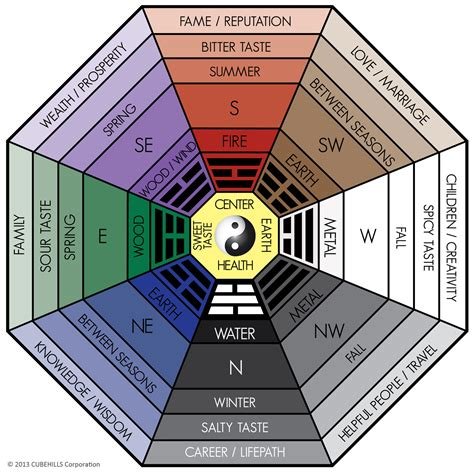The Science of Fragrance: How Perfume is Made
Perfume has been a part of human history for thousands of years, dating back to ancient civilizations who used fragrant oils and substances for rituals and personal adornment. But have you ever wondered how your favorite perfume is made? The science of fragrance is a fascinating blend of art, chemistry, and craftsmanship. In this blog post, we will delve into the intricate process of creating perfume, from the selection of ingredients to the blending and maturation of the final product.
We will explore the art of perfumery, where fragrances are carefully crafted through the principles of chemistry, as well as the different types of perfume ingredients, ranging from natural essences to synthetic compounds. You will also learn about the three stages of a perfume – top notes, middle notes, and base notes – and how they come together to create a harmonious olfactory experience. Additionally, we will discuss the methods used to extract aromatic oils, the importance of perfume formula, the role of alcohol in enhancing aromas, and the preservation and maturation of fragrances. Join us on this aromatic journey as we uncover the secrets behind the creation of your favorite scents.
The Art of Perfumery: Creating Fragrances through Chemistry
Perfumery is a delicate art that involves the intricate blending of various ingredients to create unique and captivating fragrances. This exquisite craft revolves around the principles of chemistry, as it requires a deep understanding of how different compounds interact with one another to produce a particular scent.
From natural essential oils to synthetic compounds, perfumers meticulously choose their ingredients to craft olfactory masterpieces that delight the senses. With each ingredient serving a specific purpose in the overall composition, the science of perfumery requires a keen eye for detail and a deep appreciation for the chemical processes at play.
As perfumers strive to create fragrances that are both evocative and enduring, they rely on their knowledge of chemistry to manipulate ingredients with precision. By carefully balancing top, middle, and base notes, perfumers are able to construct fragrances that unfold and evolve over time, captivating the senses with their intricate composition.
Ultimately, the art of perfumery is a testament to the powerful synergy between science and creativity, where chemistry serves as the foundation for the creation of enchanting fragrances that leave a lasting impression.
An Introduction to Perfume Ingredients: From Natural to Synthetic
When it comes to creating a signature scent, the choice of perfume ingredients plays a crucial role in determining the overall aroma. Perfume ingredients can be broadly categorized into two main types: natural and synthetic. Both types offer a variety of options for perfumers to work with, each with its own unique characteristics and benefits.
Firstly, natural perfume ingredients are derived from plants, flowers, fruits, and other natural sources. These ingredients are often obtained through processes such as distillation, expression, or extraction, resulting in essential oils and absolute that capture the true essence of the plant or flower.
On the other hand, synthetic perfume ingredients are created in a laboratory through chemical synthesis. These ingredients are designed to mimic the aroma of natural substances, offering a more cost-effective and sustainable alternative to their natural counterparts. Synthetic ingredients also provide perfumers with greater consistency and stability in their formulations.
Whether natural or synthetic, the perfume ingredients used contribute to the overall character of a fragrance, determining its longevity, sillage, and olfactory profile. Understanding the diverse range of ingredients available is essential for perfumers to create unique and captivating scents that cater to different preferences and tastes.
Top Notes, Middle Notes, Base Notes: The Three Stages of a Perfume
When it comes to the art of perfumery, understanding the three stages of a perfume is essential. The top notes are the first impression of a fragrance, typically consisting of light, fresh, and citrusy scents that evaporate quickly. These notes are what you smell immediately after applying a perfume, and they play a crucial role in grabbing the attention of the wearer and those around them.
Following the top notes are the middle notes, also known as the heart or body of the fragrance. These notes develop after the top notes dissipate and are usually floral or fruity in nature. They are what give a perfume its character and personality, creating a lasting impression that lingers throughout the day.
Finally, we have the base notes, which are the foundation of a perfume. These notes are typically rich, deep, and long-lasting, providing the final lasting impression of a fragrance. Common base note ingredients include woody, musky, or amber scents, and they serve as the anchor that holds the entire composition together.
Understanding these three stages of a perfume is key to appreciating the complexity and artistry of fragrance creation. By mastering the balance and harmony of top, middle, and base notes, perfumers are able to craft scents that evoke a range of emotions and experiences, making each fragrance a unique olfactory journey.
Extracting Essence: Methods for Obtaining Aromatic Oils
Extracting Essence: Methods for Obtaining Aromatic Oils
When it comes to perfume making, one of the most crucial steps is the extraction of aromatic oils from natural sources. There are several methods for obtaining these precious oils, each with its own unique process and benefits.
One of the most traditional methods is steam distillation, which involves heating plant material to release the aromatic compounds and then condensing the steam to separate the oil from the water. This method is commonly used for extracting oils from flowers, leaves, and other delicate plant parts.
Another popular extraction method is solvent extraction, where a solvent such as hexane or ethanol is used to dissolve the aromatic compounds from the plant material. The resulting solution is then filtered and the solvent is removed, leaving behind the aromatic oil.
For more delicate materials like citrus fruits, expression is the preferred method of extraction. This involves pressing or squeezing the rinds of the fruits to release the aromatic oils. This method is known for producing bright and vibrant citrus oils that are commonly used in perfumery.
Blending for Balance: The Importance of Perfume Formula
When it comes to creating a successful fragrance, the importance of perfume formula cannot be overstated. The blending of various perfume ingredients is a delicate process that requires a deep understanding of chemistry and aromatic oils. Each component must be carefully measured and combined in just the right proportions to achieve a harmonious balance of top notes, middle notes, and base notes.
The formula of a perfume is like a carefully crafted recipe, where each ingredient plays a crucial role in the overall olfactory experience. Whether using natural or synthetic materials, the perfumer must consider how each element will interact with the others, and how the final product will evolve over time.
One of the keys to creating a successful fragrance formula is balance. This means ensuring that no single note dominates the composition, and that the elements work together to create a cohesive and pleasing scent. The blending process is where the artistry and skill of the perfumer truly shine, as they work to achieve the perfect harmony of aromas.
Ultimately, the importance of a perfume formula cannot be overstated. It is the foundation of any fragrance, and the careful blending of ingredients is what ultimately determines the success of the final product.
The Role of Alcohol: Diluting and Enhancing Aromas
Alcohol plays a crucial role in the world of perfume making, serving as a solvent to dilute and enhance the aromas of various ingredients.
When creating a perfume, alcohol is often used to dissolve and stabilize the fragrance oils, allowing the scents to be dispersed evenly when sprayed or applied to the skin. Its volatile nature also helps to release the fragrance into the air, making it easier for the wearer to experience the full olfactory effect.
Additionally, alcohol acts as a preservative, helping to prolong the shelf life of the perfume by inhibiting the growth of bacteria and fungi. This is essential for maintaining the integrity and quality of the fragrance over time.
Furthermore, alcohol can enhance the overall scent profile of a perfume, as certain fragrant compounds are more soluble in alcohol than in water. This means that alcohol can help to bring out the complexities and nuances of the various perfume ingredients, resulting in a more well-rounded and harmonious fragrance.
A Fragrant Symphony: How Perfume Notes Harmonize
Creating a signature perfume is like composing a beautiful symphony, with each note harmonizing to create a masterpiece. Perfume notes are the individual aroma ingredients that unfold over time, revealing the different layers of a fragrance. The combination of top, middle, and base notes creates a complex and dynamic scent that is unique to each perfume.
Top notes are the initial impression of a perfume, perceived immediately upon application. These notes are often light, fresh, and evaporate quickly, setting the stage for the heart of the fragrance to shine. Middle notes are the heart of the perfume, providing fullness and body to the composition. These notes emerge after the top notes have faded, creating the main theme of the fragrance. Base notes are the foundation of the perfume, adding depth and longevity to the scent. These notes are often rich, warm, and long-lasting, providing a solid base for the entire composition.
Harmonizing these notes is essential to creating a balanced and harmonious fragrance. Each note should seamlessly transition from one to the next, creating a cohesive olfactory experience. By carefully selecting and blending the right notes, perfumers can create a symphony of scent that feels like a perfect melody on the skin.
Understanding how perfume notes harmonize is crucial for both perfumers and fragrance enthusiasts. It allows for a deeper appreciation of the art and science behind perfume creation, and it helps individuals choose fragrances that resonate with their personal preferences. The next time you apply your favorite perfume, take a moment to appreciate the delicate balance of notes that come together to create a fragrant symphony on your skin.
Preservation and Maturation: Allowing Fragrances to Flourish
Preservation and maturation are crucial steps in the process of creating high-quality fragrances. Proper preservation methods are essential for ensuring that the fragrance maintains its potency and aroma over time. Without adequate preservation, the delicate balance of perfume ingredients can degrade, leading to a loss of scent complexity and depth.
Maturation, on the other hand, refers to the process of allowing the fragrance to mature and develop over time. During this period, the different perfume notes harmonize and blend together, creating a more balanced and cohesive scent. Maturation also allows the volatile components of the fragrance to evaporate, resulting in a smoother and more nuanced aroma.
There are various methods for preservation and maturation, including storing the perfume in a cool, dark place away from direct sunlight and heat. Additionally, using airtight containers and minimizing exposure to air can help prolong the fragrance’s shelf life. In terms of maturation, allowing the perfume to rest for a certain period before use is essential for achieving the desired olfactory experience.
In conclusion, preservation and maturation play integral roles in allowing fragrances to flourish. By understanding and implementing proper preservation techniques and allowing for adequate maturation time, perfumers can ensure that their creations maintain their quality and complexity, resulting in a truly exceptional olfactory experience.






